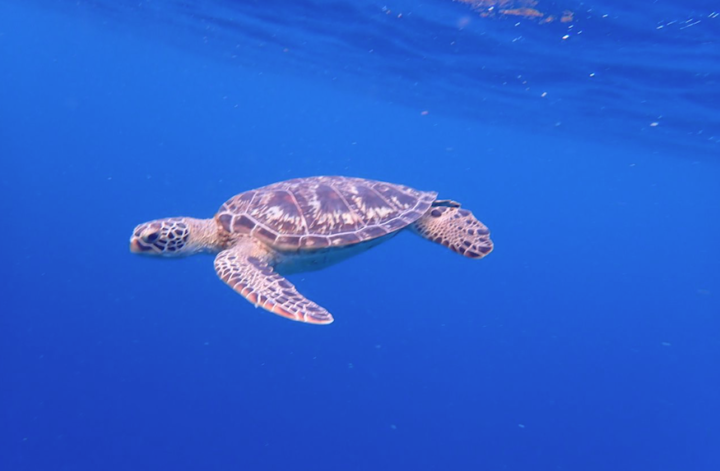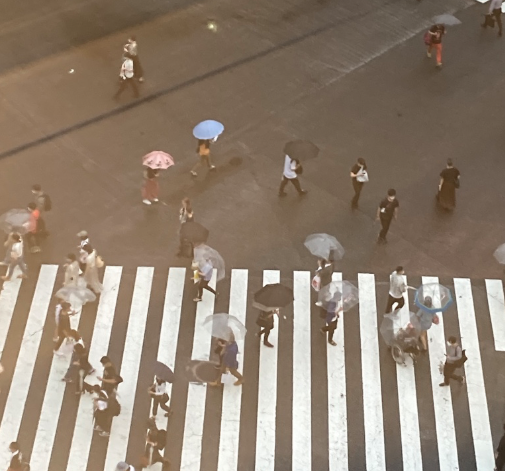Islands part of the former Ryukyu Kingdom, now commonly referred to as Okinawa, are closer to Taiwan than to the rest of Japan. The South-West islands showcase some incredible marine life and unspoiled nature, a rarity in Japan…
Miyako, Ishigaki and Taketomi ~ Keep in mind that the weather might interfere with your plans ~
I’ve also been to Okinawa main island and while I loved my accommodation and the wagyu (which literally translates to Japanese cow) beef, I was shocked by how nature has been suffocated by concrete buildings and I haven’t had the courage to go back since. The following islands however have been spared such grim destiny…

Miyakojima 宮古島





There are no words to describe how much we enjoyed our stay on this island. Pictures don’t capture how glorious this is during the summer. It’s rare to find beautiful beaches in Japan and this island has plenty. During my first visit I’ve hit over ten of them and was never disappointed. A car is absolutely needed, but rentals are quite cheap. Yoshino beach and this beach have amazing snorkel opportunities – we spent around 20 minutes in the company of a curious turtle, apparently on lunch break, and the view of the reef on the way there is stunning. If you go to one single beach, go to this one.
Mijakojima is actually made out of four tiny islands interconnected by bridges – it’s a small surface, so all points can be hit in 3-4 days. The north east coast (Hirara area) had the best secluded beaches in my opinion, some of which have caves to provide a little shade. I visited in 2021 so I had the privilege to enjoy this scenery uncrowded – in the smaller beaches we were the only people ~ but avoiding main Japanese holidays should be enough to stay away from crowds. There are some beautiful beaches with less coral like this one, where swimming is possible. In general, most beaches will be relatively shallow, but there is a bit of everything.
This is not an island where you absolutely must go diving (you can spot blue coral and anemone fish just snorkelling) – that said, there are some great diving opportunities if you’re in need of a break from the sunlight. It’s known for its caves and you can often access freshwater ponds from the ocean – it’s a wonderful experience and the way the light comes into the water from the caves makes for incredible views. Among many interesting fish you can easily spot lionfish and anemone fish (lots of different kinds! besides from the famous clown nemo you can easily spot pink and tomato anemone fish – a note on these tiny swimmers, they’re cute but territorial).
As part of Okinawa there are some local delicacies to try; from what’s available at the convenience store this drink and this snack are my favorites. This ice cream shop has a great assortment of locally grown flavors: I have a weak spot for violet potato, but other local flavors include guava or the very bitter but very refreshing local citrus shashiwa. We were lucky enough catch some traditional Okinawan live music at the izakaya, always featuring the shamisen, similar to an ukulele but made of snake’s skin (!!). As on most islands there are a few places that are quite retro, where older gentleman will be playing mahjong (Chinese chess), smoking and drinking. Souvenir-wise it’s just a matter of limiting yourself as Japanese design is hard to beat. The shisha (lions/dragons protecting the villages) are pretty much omnipresent!
The Yaeyamas (the best group!) – Ishigaki 石垣













To dive into the underwater world and spot its weird creatures I can’t recommend Ishigaki enough. The island is famous for being home to giant mantas (these peaceful animals are mostly harmless, as opposed to stingrays). It’s not guaranteed you will see mantas, but it is likely to encounter them diving at ‘Manta point’ (due to currents, this point might be hard to reach in Winter). We tried to follow one and they’re insanely fast swimmers ~ yet extremely elegant animals, it really looked like a bird soaring. In general, most animals underwater look like they’re flying (above all snakes), which adds to the feeling of being in another dimension while underwater. I will add that we left our group slightly behind to swim towards the manta so we were rightfully scolded for that *so don’t chase the mantas*. Our guide told us ‘we were lucky the manta didn’t poop!’ More than the manta I was personally impressed by the group of cuttlefish we encountered in Yonehara point (over eight of them, of different sizes). Ishigaki has a decent population of giant cuttlefish (I’ve heard they’re shameless during mating season). They’re similar to octopus in many ways, but less difficult to spot and among many interesting things they do, they change color to blend in with their habitat. They went from sand like to an iridescent color and finally became dark grey with tiny blue spots (same color as the lights inside an airplane!) and adopted the shape of a rocket/squid and moved away from us, perceiving us as danger. They really look a little like aliens… more similarities between the underwater world and the outer space.
Equally moving and maybe my best experience on the island was snorkelling at this point with one of my hosts (I can’t recommend his snorkeling tour enough as this person really knows the reef *also all the turtle pictures from above are taken by him). Snorkel always feels more natural and I feel closer to the animals than diving, when I feel more like a spectator. Free diving skills will come handy here since after a good 20’ swimming in shallow waters you get to a drop off and everything becomes light blue. And then this turtle just came closer and closer to us and swam with us ~ it got so close I could tell you exactly how her shell looked like. Turtles are slower swimmers than other animals, so there is a better chance for clumsy humans to keep up. When you spot a turtle underwater it is just a matter of waiting for them to come up to the surface to breathe ~ so do snakes! The two water snakes found in the Ryukyus are extremely poisonous but their heads-mouth-teeth are so small it is virtually impossible to be bitten. They can only bite you between your fingers or on your earlobes (If that happens you’re dead) so I feel you must be cursed to be that unlucky. Turtles eat a variety of almost imperceptible jellyfish that I only saw when it got very close to my face; mantas eat a different kind of plancton/jellyfish. So you usually either spot one or the other ~ if I understood it right, you are more likely to spot mantas when there is full moon, but it all comes down to where their food is available.
Now going back to the surface, there are still things to explore ~ my friends took advantage of the wind and went kitesurfing; during a rainy day I saw quite a few surfers and paddlers ~ but none of these activities are suited for beginners here I think. A visit to the farmers’ market is always a good idea. I especially enjoyed: guava, sea grapes, sashimi from local lady vendor close to Yonehara, seafood in general, anything sugar cane related as it is gown on the island (but sugar is even better in Iriomote). They also sell beautiful glass jewellery made on the islands. There are some nice beaches close to Kabira Bay, but currents bring trash (plastic) from Taiwan/mainland China so they need to be cleaned up often. A reminder that the Yayeyamas are closer to Taiwan than to Japan.
Taketomi 竹富島


Taketomi was such a sweet treat – I really advice to spend an evening on the island if you like tranquility. On a guidebook it’s described as ‘pancake island’ since it’s very tiny ~ it is so small I don’t even recommend renting a bike, you can just walk. The Ryukyus have a culture of their own (it used to be a kingdom and just things like food let you appreciate at least some Chinese influence) and have been annexed to Japan only in the 20th Century. The Pacific war was a prelude to WWII on this side of the globe, so many naval battles between US and Japan were fought in these waters. This intro is only to say that the islands were handed over to Japan officially in 1957 ~ but as everywhere in Japan, progress doesn’t stop and when progress takes place too fast tradition is often lost. So of the beautiful traditional Ryukyu villages there is little trace left and Taketomi is trying to reverse this trend. Here houses have been rebuilt in the traditional Ryukyu style and many traditional crafts (bamboo, pottery, music) are being fostered. It doesn’t come off as fake, it turned up surprisingly well. I cannot recommend my accommodation enough as all things used to prepare breakfast are grown in their garden. At night I could overhear my host playing the shamisen (not for tourists but for herself). The ferry ride is only 30’ from Ishigaki port.
More islands
I also visited Iriomote 西表島 and can state that this is the only island that has truly a remote feel to it (there is a small supermarket, but no convenience store ~ a rarity in Japan) and it has beautiful waterfalls. It is different and that’s always welcome – think of a green island, mostly jungle. To get to most waterfalls will require a combination of kayaking in calm waters and walking in jungle path. It’s a Ghibliesque forest as even not being super dense it’s full of odd shaped trees (that look ready to squeeze you) and tiny little weird creatures that have served as inspiration for anime (Kamaji to name one). The forest is, if not magical, at least insidious as many trees and plants are poisonous (the only dangerous animal on the other hand are hubu snakes, but they’re nocturnal). I did however feel a pinch of distress during the excursion to Pinaisara falls as the guides (who were very likable) monitor you as you were entering the jungle in Borneo. You’re basically told on which stone to step on and forced to wear a life jacket to dip in a waterfall 1m deep where it’s impossible to drown. It sometimes feels like the only thing you can do is take pictures (which I did!!). But at times it felt like we were approaching nature as stepping into another (potentially dangerous) planet. Of course I got all happy again once I was handed my soba noodles (the pork was delicious!), tea and local cookies. But just be prepared for this kind of super Japanese-version of ‘adventure tourism’. Anthropologically it is fascinating! I just found it worrisome that this is considered ‘wild’. It is admirable the effort to keep nature untouched (you have to use a disposable toilet) and it’s also moving to see how locals and guides who have moved to the island genuinely love and marvel at what this island has to offer ~it’s sweet, a kind of love. Only my interpretation, but the way the Japanese from the mainland marvels at this really makes me think of the connection between Shintoism and forests, as a ‘religion of nature’ where Gods live. There’s nothing to do at night on Iriomote besides admiring the stars on a clear night and I loved the island for this.

::::: Dreaming of visiting Yonaguni sometime soon ::::::



